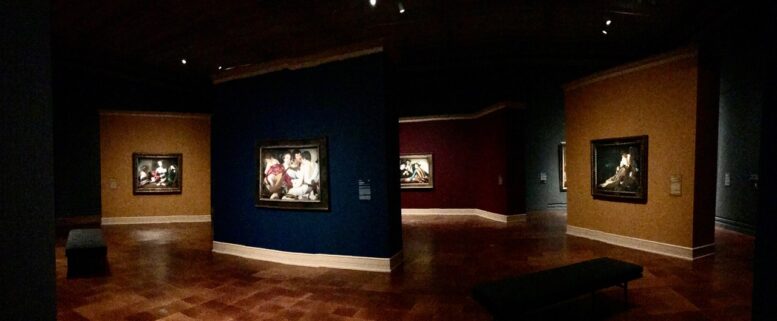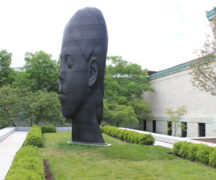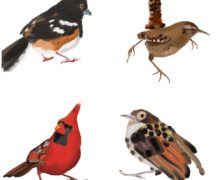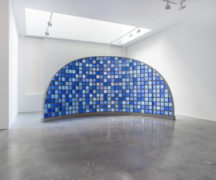By DAVID DUPONT
BG Independent News
The painter born Michelangelo Merisi da Caravaggio, known simply as Caravaggio earned a reputation in Rome where he lived from about 1592, when he arrived as a 21-year-old apprentice until he fled the city 14 years later.
He was a hot head, who threw a plate of artichokes at a waiter, brawled, wrote scandalous letters, until he had to flee in after he killed a man in a swordfight.
Also, he developed his reputation as an artist there and was highly sought after to paint altar pieces. His paintings often dealt with religious topics, though he depicted secular scenes as well.
“The Brilliance of Caravaggio: Four Paintings in Focus” opens today (Saturday, Jan. 20) in the Toledo Museum of Art’s Canaday Gallery. Tickets are $10 and free to museum members.
[RELATED: ‘Brilliance of Caravaggio’ opens at Toledo Museum]
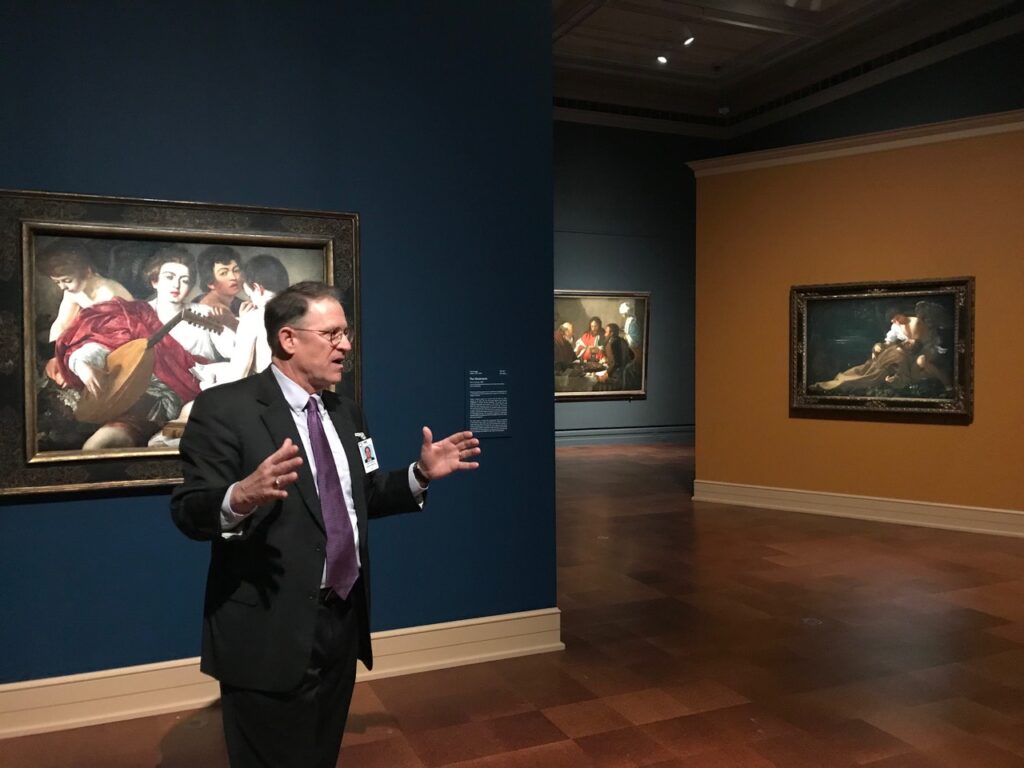
Lawrence Nichols, the curator emeritus who envisioned and realized the show, said at a press preview Friday that Caravaggio upset the art world with more than his behavior. He abandoned the idealistic representations of Raphael and his predecessors. Instead he depicted what he witnessed and felt on the streets of Rome. “He painted what was in front of him.”
The curator quoted art critic Robert Hughes about Caravaggio’s influence. “Caravaggio was one of the hinges of art history: there was art before him and art after him, and they were not the same.”
The exhibit chronicles the early stages of the revolution wrought by Caravaggio.
The four Caravaggio paintings in the show are all on loan.
They are:
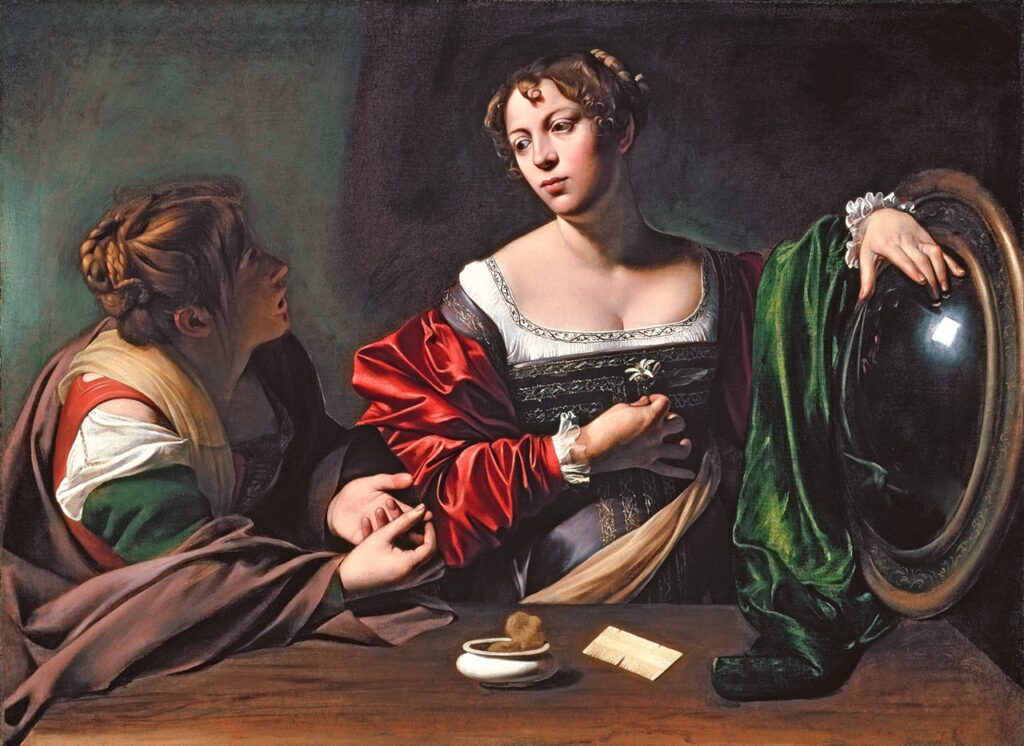
- “Cardsharps” : Kimbell Art Museum in Fort Worth, Texas
- “The Musicians” Metropolitan Museum of Art in New York City.
- “Saint Francis of Assisi in Ecstasy” from Wadsworth Atheneum, Hartford, Connecticut
- “Martha and Mary Magdalene” Detroit Institute of Arts

Nichols said the ability to bring these paintings to Toledo is possible because Toledo has been generous in loaning signature works from its collection. “Lenders are able to ask,” he said. “We’ve been able to call in the chips.”
These are all from his earlier years in Rome, the final years of the 16th century, but they are not “juvenilia,” Nichols said. They show an artist in control of his craft. He did not paint from drawings, but from models or memory, recording what he saw directly onto the canvas.
Caravaggio employed light to dramatic effect. We may call that now “cinematic, “ a testament to the long reach of Caravaggio’s influence.
Nichols has also brought together four major works from Toledo’s own collection that reflect that influence. These artists even have their own name – Caravaggisti.
The works are:
- Valentin de Boulogne’s “Fortune Teller with Soldiers” (ca. 1620).
- Jusepe de Ribera’s “Portrait of a Musician” (1638).
- Hendrick ter Brugghen’s “The Supper at Emmaus” (1616).
- Artemisia Gentileschi’s “Lot and his Daughters” (ca. 1636-1638)
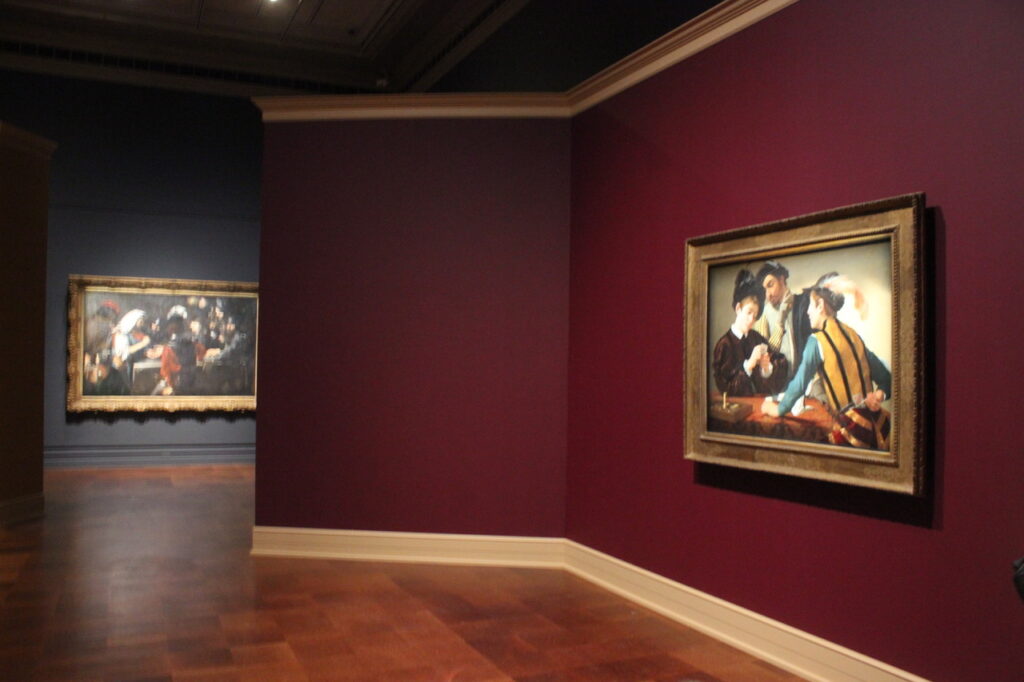
The most striking pairing is “Cardsharps” with “Fortune Teller with Soldiers.”
Caravaggio paints a stark tale – a dandy facing off in a card game with another youth as unbeknownst to him, the rapscallion over his shoulder signals what’s in his hand to his young accomplice. The painting has the vigor and bite of realism. One can imagine Caravaggio out on the town witnessing the scene.
Valentin de Boulogne picks up this theme of duplicity, and multiplies it with several figures cheating others and being cheated themselves.
In both paintings, the viewer becomes an accomplice to the chicanery.
Caravaggio brings that same direct realism to his religious paintings as well.
The installation places the four featured works at the center with the complementary works and a video on Caravaggio in alcoves to the side.
Nichols said he started to conceive of the show in 2018, about the time he curated his last major show “Frans Hals: A Family Reunion.” His retirement and the pandemic ensued, but he remained under contract to stage the show. He called on long-time collaborator Claude Fixler, another recent TMA retiree, to come back to do the gallery installation. “It was a no brainer to bring him in. He’s a talented installation designer.”
Fixler “listens to a curator” and then devises spaces that realize their visions.
Here the visitor is absorbed in Caravaggio’s genius. The idea was not to create a linear path, but allow the viewer to wander within a womb-like space.
This offers art lovers a a rare opportunity to see together four paintings by Caravaggio – there are only seven in American collections. That should attract national attention.
Still the goal is present this show for local and regional viewers, Nichols said.
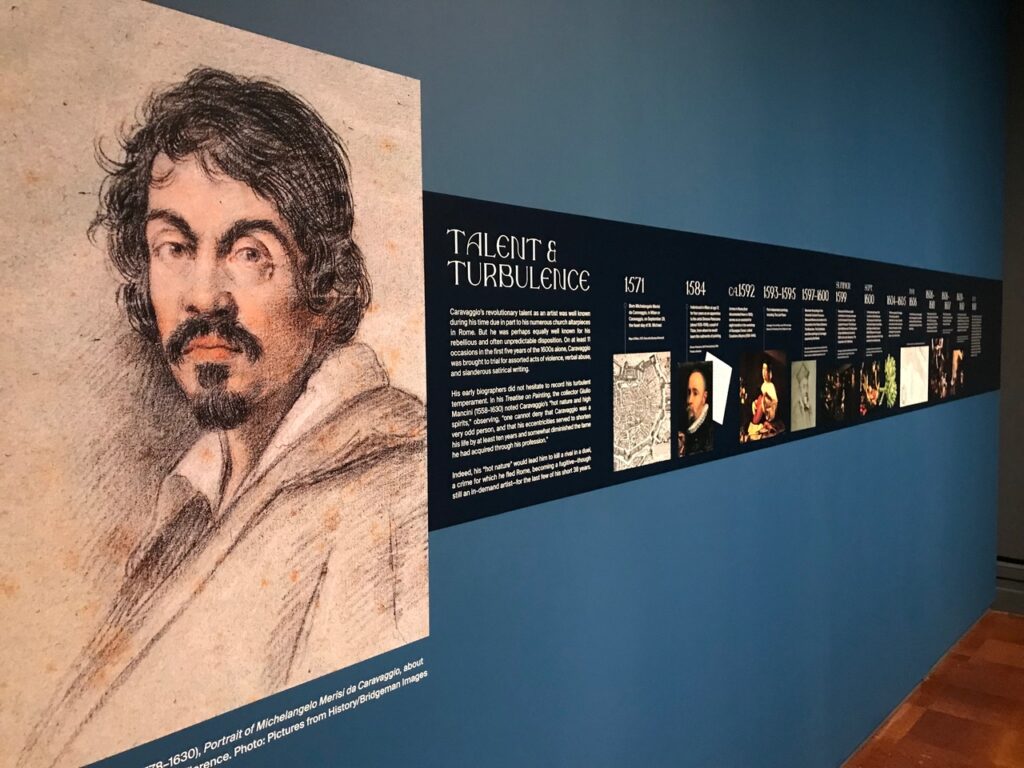
Museum Director Adam Levine said “the incredible thing about the Toledo Museum of Art is our commitment to our community and our opportunity to engage nationally and internationally. This show does both.
“It is here,” he continued. “It is only here. It goes nowhere else. It’s for our region. But because it is here and it’s going nowhere else, and there’s not been a show like this in in more than a decade in this country, it will absolutely draw from outside of Toledo.”
Some of those visitors may include people trekking to Northwest Ohio for prime viewing of the solar eclipse on April 8, a few days before the exhibit’s last day on April 14.
“We hope,” Levine said, “that people after their three minutes of total darkness will come out and see the master of light and darkness.”

